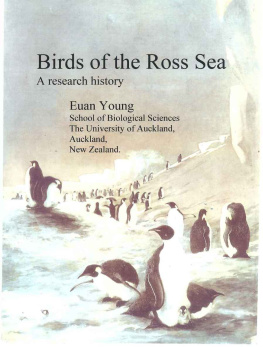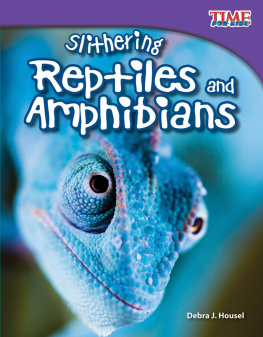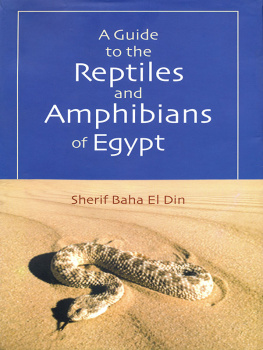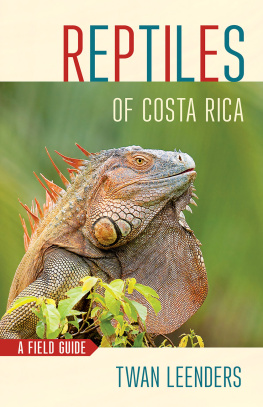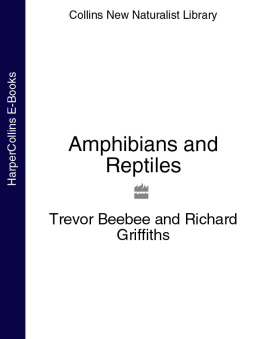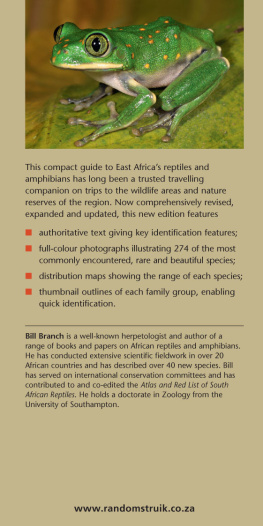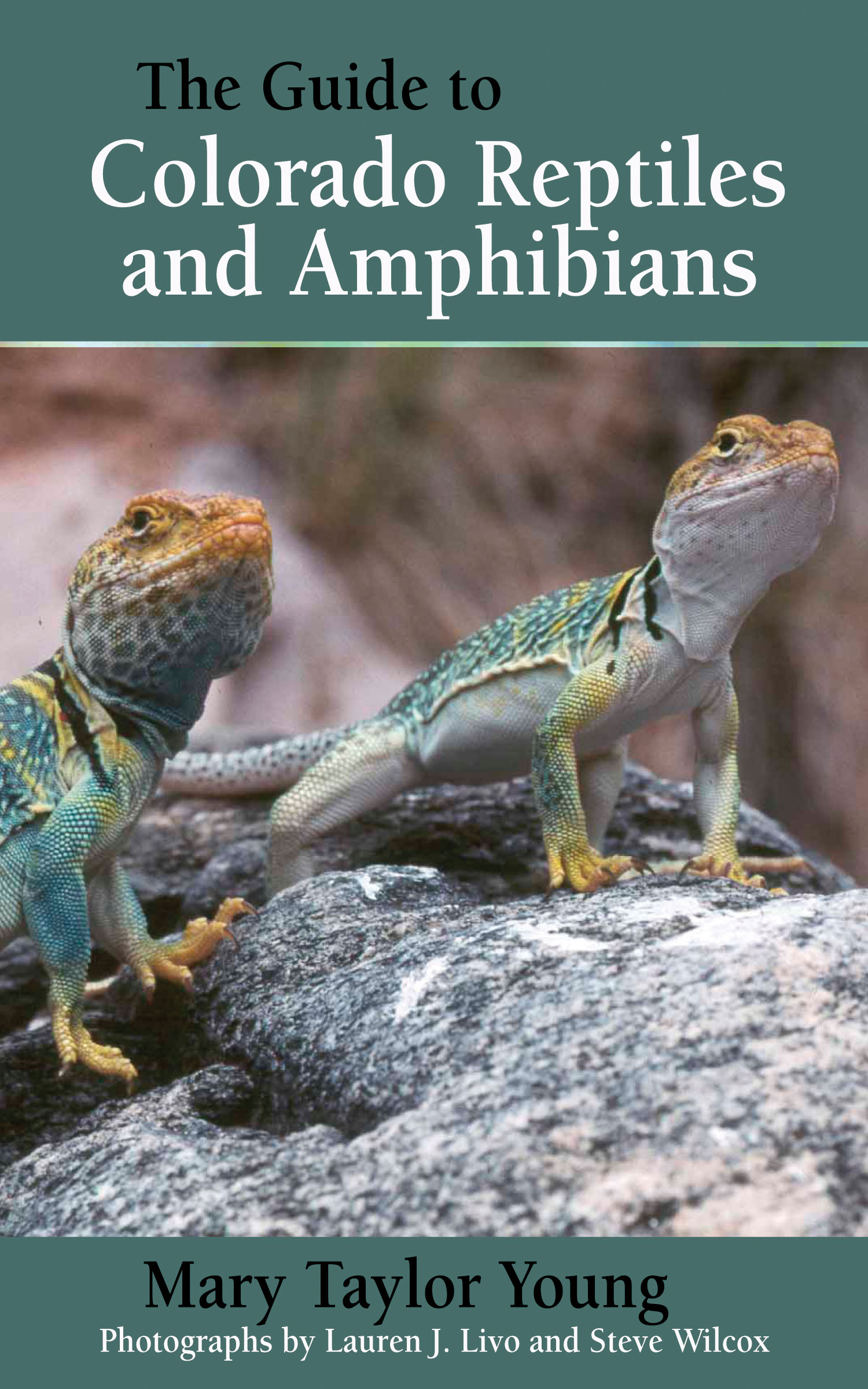Text 2011 Mary Taylor Young
Images 2011 Lauren J. Livo and Steve Wilcox
All rights reserved. No part of this book may be reproduced or transmitted in any form or by any means, electronic or mechanical, including photocopying, recording, or by an information storage and retrieval systemexcept by a reviewer, who may quote brief passages in a reviewwithout permission in writing from the publisher.
Library of Congress Cataloging-in-Publication Data
Young, Mary Taylor, 1955
The guide to Colorado reptiles and amphibians / By Mary Taylor Young ;
photographs by Lauren J. Livo and Steve Wilcox.
p. cm.
Includes bibliographical references and index.
ISBN 978-1-55591-584-1 (pbk. : alk. paper) 1. Reptiles--Colorado. 2.
Amphibians--Colorado. I. Title.
QL653.C6Y68 2011
597.909788--dc22
2010040141
Printed in Korea
0 9 8 7 6 5 4 3 2 1
Design: Jack Lenzo
Cover image: Lauren J. Livo, Crotaphytus collaris eastern collared lizards
Fulcrum Publishing
4690 Table Mountain Drive, Suite 100
Golden, Colorado 80403
800-992-2908 303-277-1623
www.fulcrumbooks.com
Contents
Acknowledgments
The metamorphosis of this book from tadpole to frog came about with the help of others. Thanks go to top-notch herpetologist Lauren Livo for her early input on the species list and for reviewing the text, as well as for the wonderful photography she and her husband, Steve Wilcox, provided. Kudos to Tina Jackson, state herpetologist with the Colorado Division of Wildlife, for her support and enthusiasm and for reviewing the manuscript (and for having a charming pet box turtle named Turtle). Thanks to Derek Lawrence, Faith Marcovecchio, and the other folks at Fulcrum Publishing for supporting this book and in that way, supporting the wildlife of our state. I thank Geoffrey A. Hammerson for his excellent book Amphibians and Reptiles in Colorado , which was a wonderful resourcea thorough and technical guide for anyone interested in delving deeper into the biology and life history of Colorado reptiles and amphibians.
Introduction
Weve all encountered reptiles and amphibians, maybe a turtle lumbering across a country road, a frog hopping with a splash into a pond, a snake slithering through the grass at our feet. As kids, many of us brought home a toad in our pocket as a gift for Mom. Theres something about these creeping, crawling, darting creatures that fascinates us and brings an element of surprise, delight, and whimsy to outings in the Colorado outdoors.
Habitats in Colorado range from under 4,000 feet at the Kansas border to above 14,000 feet atop the highest peaks. A variety of reptiles and amphibians inhabit this 10,000-foot elevation spread. The ponds and creeks of the Eastern Plains are home to a variety of snakes, turtles, frogs, and toads. Western canyons provide habitat for various lizards and snakes, and species that tolerate dry conditions. While few reptiles are found above 6,000 feet, some hardy amphibians, including wood frogs, boreal toads, and boreal chorus frogs, survive in the most austere conditions amid alpine wetlands and ponds at the highest elevations in the state. Colorados lone salamander, the barred tiger salamander, is found statewide, from the lowest to highest elevations. More than 70 species of reptiles and amphibians live in the many habitats in between.
The Guide to Colorado Reptiles and Amphibians will help readers discover many of these fascinating herptiles. This nature guide is written for a general audience so that kids, families, and creepy-crawlie fans of all persuasions can read it and use it in the field. I hope that by discovering and learning more about these quirky and fascinating creatures, readers will also become advocates for their protection and conservation.
Reptiles + Amphibians = Herptiles
Reptiles and amphibians are often lumped together. Both groups are cold blooded and lack either feathers or fur, so they dont seem very warm and cuddly. Since many of them crawl or scurry, we often characterize them as creepy-crawlies. Even biologists lump them together under the terms herptiles or herpetofauna (with the nickname herps ). The scientists who study them are called herpetologists. The root of the word comes from the Greek word herpeton , meaning a creature that creeps or crawls. But reptiles and amphibians each belong to a different animal class. Reptiles, class Reptilia, have dry, scaly skin and breathe air throughout their life. Amphibians, grouped into the class Amphibia, typically have moist, slimy skin, require water for breeding, and undergo a metamorphosis from water-breathing, fishlike larva to air-breathing, four-legged adult.
How Animals Are Related
Biologists classify animals in a cascading taxonomic system of categories, from general to specific, that every beginning biology student must memorize: kingdom, phylum, class, order, family, genus, species. (These classifications are further broken down into subfamily, subspecies, and so forth.) Thus, an ornate box turtle would be categorized in the following way:
Kingdom: Animalia (animals rather than plants)
Phylum: Chordata (animals with a backbone)
Class: Reptilia (reptiles, as opposed to fish, amphibians, birds, or mammals)
Order: Testudines (turtles)
Family: Emydidae (pond and box turtles)
Genus: Terrapene (box turtles)
Species: ornata (ornate box turtle)
Colorado is home to about 71 species of reptiles and amphibians, though this can change with new information and discoveries.
How to Look for Reptiles and Amphibians
We often find reptiles and amphibians by accident, coming across them in the course of hiking or exploring. We can increase our chances of finding them by knowing the habitats in which they live and understanding their activity patterns and seasonal behaviors.
Spring through fall is reptile and amphibian season. Because they are cold blooded, meaning they derive warmth from their surroundings, these animals are largely inactive during the cold months of the year and during cool times of day. They hibernate during winter, though some become active on warm, sunny winter days.
Reptiles are sun-loving creatures, and many bask to elevate their body temperature, especially in the morning, when they emerge from cool, sheltered spots. If you visit a wetland or pond, approach slowly and look for turtles basking on logs, hummocks, and banks. Rocks and outcrops are good places to spot basking lizards. Snakes often slither onto roads, trails, and patches of open, dark-colored soil to warm up.
The spring breeding season offers some fun chances to seeand hearinteresting behaviors. In evening, early morning, and sometimes during the day, frogs and toads sing in breeding ponds and wetlands to attract mates. The sound can be deafening. But step to the edge of the pond, and the croaking will stop like someone flipped a switch. Sit quietly, and the animals will come to the surface and begin calling again. Watch as they inflate the vocal sacs on their throats like enormous balloons.
Lizards are fairly tolerant of being approached. You may be rewarded with the sight of competing males doing push-ups or body lifts to flash their breeding colors and challenge each other. They may rush at and chase each other.
Driving country roads in the evening, especially after a rain, is a good way to find reptiles and amphibians. As the air cools, snakes often move onto warm roadways. Frogs, toads, and turtles may also move across roadways as they migrate to breeding areas. Be very careful not to run over them. Thousands of snakes, turtles, frogs, and toads are killed by vehicles every year. Centuries of adaptation have not prepared these animals for the obstacles of roads built through their habitat. A turtles shell is poor defense against a speeding car.





